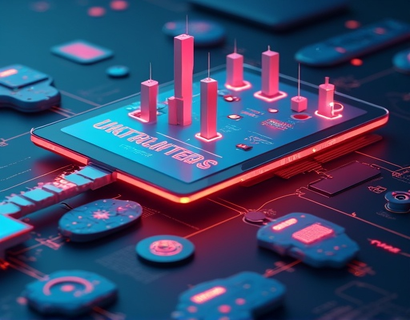Empowering Digital Transformation: The Synergy of AI and Crypto
The intersection of artificial intelligence (AI) and cryptocurrency is paving the way for a new era of digital transformation. For tech innovators and early adopters, this fusion offers unprecedented opportunities to enhance security, efficiency, and user experience. This comprehensive guide delves into the ways AI and cryptocurrency are revolutionizing online interactions and empowering digital experiences.
Understanding the Basics
To fully appreciate the potential of AI and cryptocurrency, it's essential to understand the fundamentals of both technologies. Artificial intelligence refers to the simulation of human intelligence processes by machines, particularly computer systems. These processes include learning (the acquisition of information and rules for using it), reasoning (using rules to reach approximate or definite conclusions), and self-correction. On the other hand, cryptocurrency is a digital or virtual token that uses cryptography for security and operates on a decentralized network, typically a blockchain, which ensures transparency and immutability.
Enhancing Security with AI and Crypto
One of the most significant benefits of combining AI and cryptocurrency is the enhancement of security measures. Traditional security protocols can be vulnerable to sophisticated cyber attacks. AI, with its advanced analytics and machine learning capabilities, can detect and respond to threats in real-time. In the context of cryptocurrency, AI can monitor transactions for unusual patterns that may indicate fraud or malicious activity, thereby strengthening the security of blockchain networks.
Smart contracts, self-executing contracts with the terms directly written into code, can also benefit from AI. AI can ensure that the conditions of smart contracts are met accurately and securely, reducing the risk of errors and fraud. This synergy not only protects users but also builds trust in digital transactions.
Boosting Efficiency Through Automation
Efficiency is a key driver for businesses and individuals adopting AI and cryptocurrency. AI-driven automation can streamline various processes, from data analysis to customer service. In the realm of cryptocurrency, AI can optimize trading strategies by analyzing vast amounts of market data, identifying trends, and making predictions. This allows for more informed and timely decision-making, reducing human error and increasing profitability.
Blockchain technology itself is inherently efficient due to its decentralized nature, eliminating the need for intermediaries. When combined with AI, the efficiency gains are magnified. AI can manage and optimize blockchain operations, ensuring that transactions are processed swiftly and resources are used effectively. This is particularly beneficial for industries that require high transaction volumes, such as finance and supply chain management.
Innovating User Experience
The user experience (UX) is a critical factor in the adoption of new technologies. AI and cryptocurrency together offer innovative solutions to enhance UX. For instance, AI-powered chatbots can provide 24/7 customer support, answering queries and guiding users through complex processes. In the context of cryptocurrency, AI can simplify the often daunting task of navigating blockchain networks, making it more accessible to non-technical users.
Personalization is another area where AI shines. By analyzing user behavior and preferences, AI can tailor experiences to individual needs, whether it's recommending specific cryptocurrency investments or customizing app interfaces. This level of personalization not only improves user satisfaction but also fosters loyalty and engagement.
Case Studies and Real-World Applications
Several projects and platforms are already leveraging the power of AI and cryptocurrency to drive digital transformation. One notable example is DeFi (Decentralized Finance), which uses blockchain and AI to offer financial services without traditional intermediaries. AI algorithms can optimize lending, borrowing, and trading, making these services more efficient and accessible.
Another example is the use of AI in cryptocurrency portfolio management. Platforms like Portfolio AI use machine learning to analyze market data and provide personalized investment advice. This helps users make data-driven decisions, reducing the emotional bias often associated with trading.
Challenges and Considerations
While the potential of AI and cryptocurrency is vast, there are challenges that must be addressed. Regulatory uncertainty remains a significant hurdle. Governments and regulatory bodies are still grappling with how to oversee these emerging technologies, which can create legal and operational complexities. It's crucial for tech innovators to stay informed and compliant with evolving regulations.
Another consideration is the technical expertise required to implement AI and blockchain solutions. Developing and maintaining these systems requires a skilled workforce. Organizations should invest in training and hiring professionals who can bridge the gap between AI and cryptocurrency.
Future Trends and Opportunities
The future of AI and cryptocurrency is bright, with numerous trends and opportunities on the horizon. One emerging trend is the integration of AI with other blockchain applications, such as Internet of Things (IoT) devices and smart cities. AI can process and analyze the vast amounts of data generated by these devices, optimizing urban planning and resource management.
Another exciting development is the rise of AI-generated cryptocurrencies. These tokens are created using AI algorithms that simulate market conditions, potentially offering new investment opportunities. However, the authenticity and value of such tokens remain a topic of debate and require careful scrutiny.
Conclusion
The fusion of AI and cryptocurrency is transforming the digital landscape, offering unparalleled opportunities for security, efficiency, and innovation. For tech enthusiasts and early adopters, embracing these technologies can significantly enhance their digital experiences and position them at the forefront of the next technological revolution. By staying informed, investing in the right skills, and exploring practical applications, individuals and organizations can unlock the full potential of this powerful synergy.










































